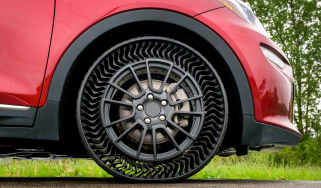Ford Focus 2025 review – is Ford killing its best car?
The Ford Focus goes out of production in November 2025. Will we miss the car itself, or just the name it wears?
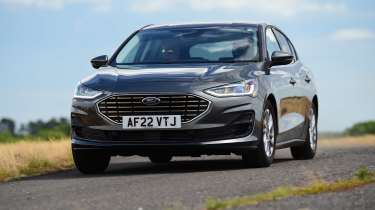
With the death of the Fiesta and soon the Focus, what cars remain within the range that are so unmistakably Ford? Fords used to be the cars that proved beyond all doubt that affordable didn’t have to mean austere; that accessible cars could be aspirational, with an attractive design inside and out, quality appointment, contemporary tech and above all else, joy to the dynamics and driving balance that’s well above their pay grade.
The Fiesta and the Focus were, we fear, the last Fords of an everyman variety with these principles hard-wired into their DNA. To be sure we weren’t delusional, we booked in as billy basic a Focus as we could, to re-sample what is now the last ‘traditional’ Ford, as a sort of goodbye and to work out whether our gut instinct was right: with the death of the Focus, will Ford be killing off its best car?
Even as the thing pulled up outside my house, I was reminded that design-wise, the original really was lightning in a bottle. Neither the Mk2 from 2005, the Mk3 from 2011 or the Mk4 from 2019 that this car is a development of, could ever claim to be quite so bold, innovative or distinctive within their segment. Whether subsequent Focus generations failed to maintain that disruptive momentum or whether other manufacturers caught up after being shaken awake by the original breaking the hatchback mold, is not a debate for here. My feeling is it’s a mix of both. Either way, the Mk4 Focus, while handsome, doesn’t crick necks on your local high street like the original did back in 1998.
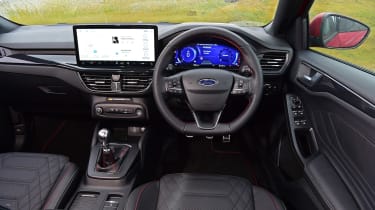
Happily there’s good form to be found once inside, though confession time, our car wasn’t totally bottom-spec... The ST-Line specification adds a sporty edge we’ll grant you, but apart from the red stitching and being a bit big, the wheel is the right thickness with common sense controls. Generally all the touch points are good but you’re not looking far before you find some iffy plastics. Practicality-wise? It’s a Focus – the boot’s cavernous and the cabin will seat parents and 2.5 kids without stress or discomfort.
More reviews
The gear lever too with its metallic-look top is a nod to the expectation you should have that it’ll have dynamic chops above its station. Fundamentally, the balance of the Focus is good – it’s pleasingly neutral in its stance under lateral load, with the car responding at an entirely natural, commensurate rate to your inputs. There’s a rubberiness to the steering but pleasing weighting. The limits on this car are incredibly low, though that’s largely down to the Continental Eco Contact tyres which very quickly let you know how unwilling they are to find purchase and transmit an adhesive dialogue.
> Ford Focus ST Edition 2025 review – a worthy alternative to the Honda Civic Type R?
Look past the Contis and you find a willing chassis with lean and roll and an entirely transparent balance that you can play with on a whim – that of a more traditional, basic hatchback from years gone by. Something quite alien to any early Focus is driving modes, though without the optional adaptive dampers or the dual-clutch gearbox, ‘Sport’ only yields a bit of extra throttle response and some added steering weight.
The ride from the passive suspension is compliant, if not resolutely controlled over serious undulations. As with the design, the underpinnings of the Mk4 aren’t as innovative as when the Focus first appeared, the rear end not being universally home to independent suspension, with the lowest models getting a torsion beam. As an ST-Line on the sport suspension, our car allowed this car to avoid that technical ignominy.
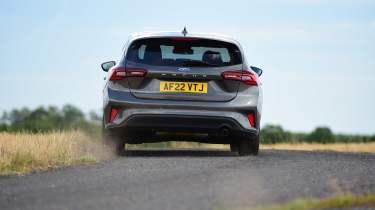
What about the powertrain? The numbers aren’t spectacular, with the 1-litre turbocharged three-cylinder EcoBoost engine producing 123bhp 120lb ft, for 0-62mph in 10.2sec. It’s a lump that’s defined small Fords for a while now, but the experience matches the spec sheet. It doesn't respond that well, doesn't have much in the way of low-, mid- or high-range punch and has a three-cylinder thrum that errs on the side of taxing rather than titillating. The revs also hang like a kite on an updraft.
That gets in the way a bit when you’re dancing across the pedals down through the gears. The six-speed manual itself is enjoyable if not remarkable, with good weight to the throw if not much in the way of precision. The ratios feel long given the short window of peak torque. Nonetheless, a manual that’s rewarding to operate in an affordable car is something to be celebrated in 2025.
> Best fast Fords of all time – from the GT supercar to the Fiesta ST
There are certain uncomfortable realities of modern motoring that the Focus hasn’t escaped, and they begin before you first fire it up. That giant 13.2-inch screen, has taken hostage the climate controls behind a wall of pixels. As screens go the UI is at least relatively intuitive (if a bit cheap in its design) and responsive too.
Then when you get going, the mild-hybrid system is almost immediately jarring, with regeneration off-throttle almost feeling like a firm press of the brake, to the point that actually pressing them and the handover from regen to friction sees the car’s rate of deceleration decrease. You find yourself hovering on the throttle instead of letting off totally, to avoid it. There’s no avoiding it altogether either, given Ford dropped the non-hybridised Focus last year.
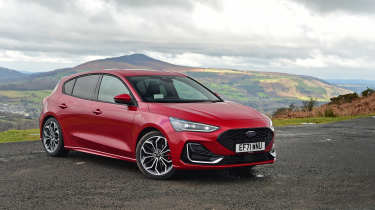
So what did we find? Is the Focus a legend of the game to inspire tears from onlookers at its final curtain call? The reality isn’t quite so romantic. The Focus remains what we would consider the best car Ford currently makes and as such, that is what Ford is killing when production stops in November.
But it’s not the Focus on its finest form, relatively speaking. It's not the last paragon of traditional internally-combusted, manual-transmissioned simplicity and classic Ford intuitiveness. The reality is that the best ‘normal’ car Ford ever made probably bowed out as the Mk7 Fiesta, if not, that original Focus – cars of a type that simply aren't viable, or even allowed to be made in 2025.
Perhaps it hasn’t yet and we just need to accept the new crossover normal and the enormously successful (and reasonably appealing) Puma. All the same, the Focus name will be missed, if for nothing else, as the second-to-last car in Ford’s lineup priced below £30k to start. We'll also miss the simple joy of a low-powered hatch with a manual transmission. Ford dealers will be that much more alien to the Blue Oval faithful without small, stylish, aspirational yet affordable, simple and enjoyable proper hatchbacks in the lineup.
Price and rivals
In November, the Focus will step down from a 27-year battle against long-standing rivals, the Volkswagen Golf and Vauxhall Astra. Like the Ford, both have moved with the times, often not for the better, with dwindling powertrain options, ill-conceived and often-infuriating digitisation and slowly climbing prices.
In its final year the Focus’s starting price is over double that of the original, with the base model costing £28,730. That said, it probably comes with three-times the standard equipment. Some things never change – the Astra is still the value proposition starting from £25k. The Golf has traditionally been the higher-quality, more expensive option but given its range remains broad enough to offer a petrol-only entry-level model, it comes in at a lower £28,010 starting price.


